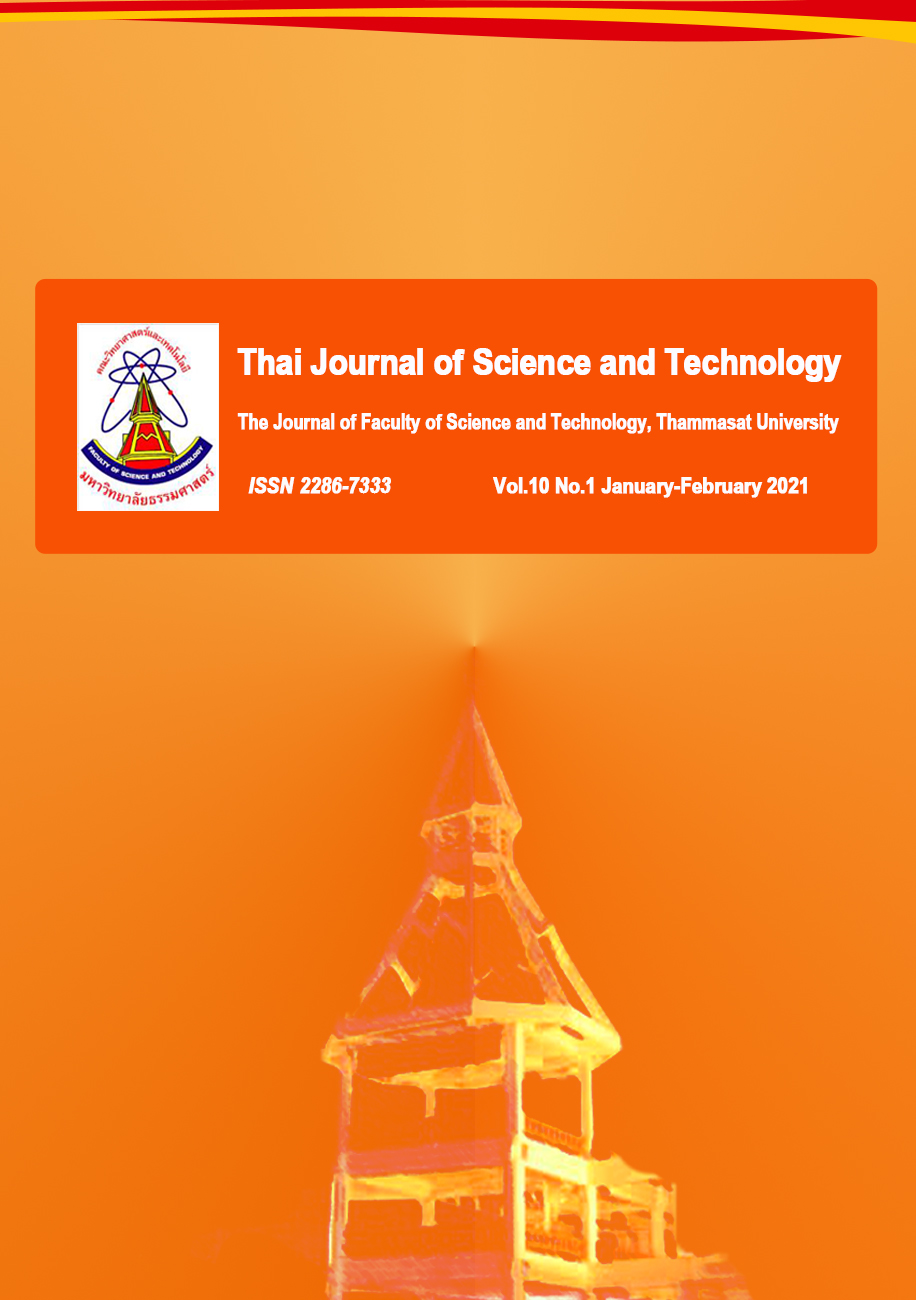Assessment of Agricultural Pesticide Contamination and Health Risk in Main Rivers of Thailand
Main Article Content
บทคัดย่อ
Agricultural production has been one of the major economic resources of Thailand. Maintaining agricultural yields is vital to economic growth and stability. Hence, the application of pesticides in agriculture has been employed to boost yields and avoid unanticipated consequences. This study was conducted to assess pesticide contamination in the Chao Phraya, Pa Sak, and Tha Chin rivers, Thailand. Water samples of these three rivers were collected in both dry and wet seasons from 2009 to 2016. Gas chromatography was used for pesticide analyses of organochlorine, organophosphate, carbamate, pyrethroid, and triazine. The results revealed that organochlorine (endosulfan), organophosphate (chlorpyrifos, malathion, pirimiphos methyl, EPN and diazinon), carbamate (carbaryl), and triazine (ametryn and atrazine) pesticides were detected in the range of 0.01 to 13.40 µg/L in these three rivers. Atrazine of the triazine group was the most frequently detected herbicide. The highest concentration of 13.40 µg/L was detected in the Pa Sak river in the wet season, right after pesticide application. However, the detected levels did not exceed the maximum allowable concentration of guidelines by the World Health Organization or U.S. Environmental Protection Agency. The detected pesticides were non-carcinogenic. The hazard quotient estimate was <1 showing a low health risk using these waters for drinking.
Article Details

อนุญาตภายใต้เงื่อนไข Creative Commons Attribution-NonCommercial-NoDerivatives 4.0 International License.
บทความที่ได้รับการตีพิมพ์เป็นลิขสิทธิ์ของคณะวิทยาศาสตร์และเทคโนโลยี มหาวิทยาลัยธรรมศาสตร์ ข้อความที่ปรากฏในแต่ละเรื่องของวารสารเล่มนี้เป็นเพียงความเห็นส่วนตัวของผู้เขียน ไม่มีความเกี่ยวข้องกับคณะวิทยาศาสตร์และเทคโนโลยี หรือคณาจารย์ท่านอื่นในมหาวิทยาลัยธรรมศาสตร์ ผู้เขียนต้องยืนยันว่าความรับผิดชอบต่อทุกข้อความที่นำเสนอไว้ในบทความของตน หากมีข้อผิดพลาดหรือความไม่ถูกต้องใด ๆ


